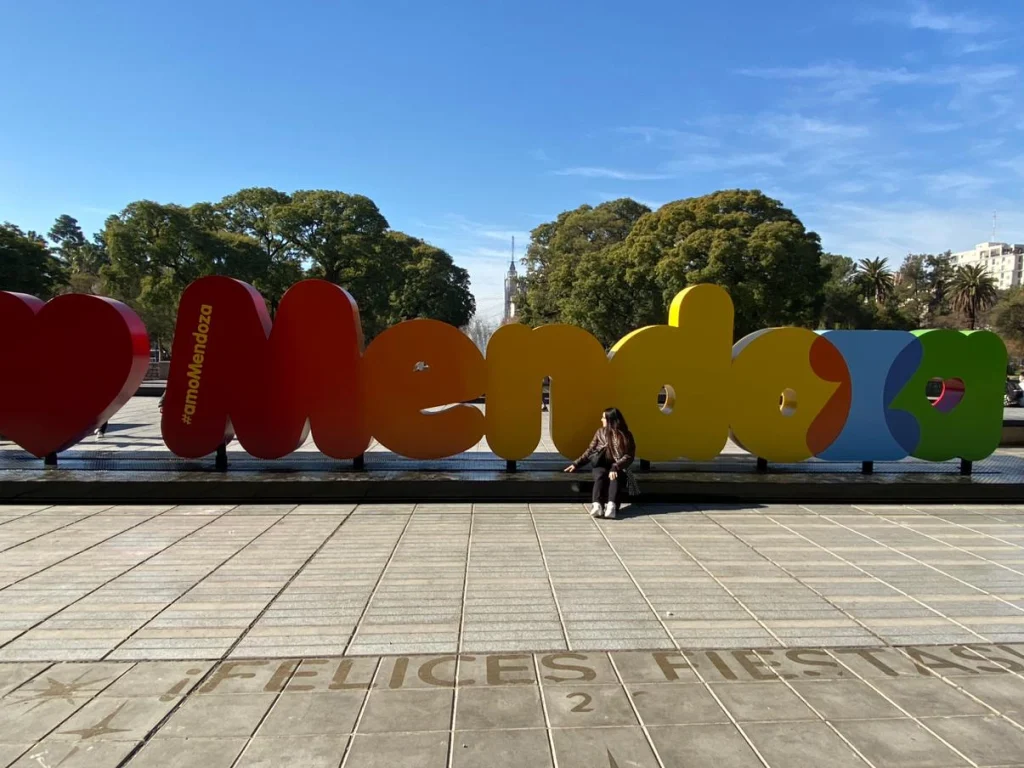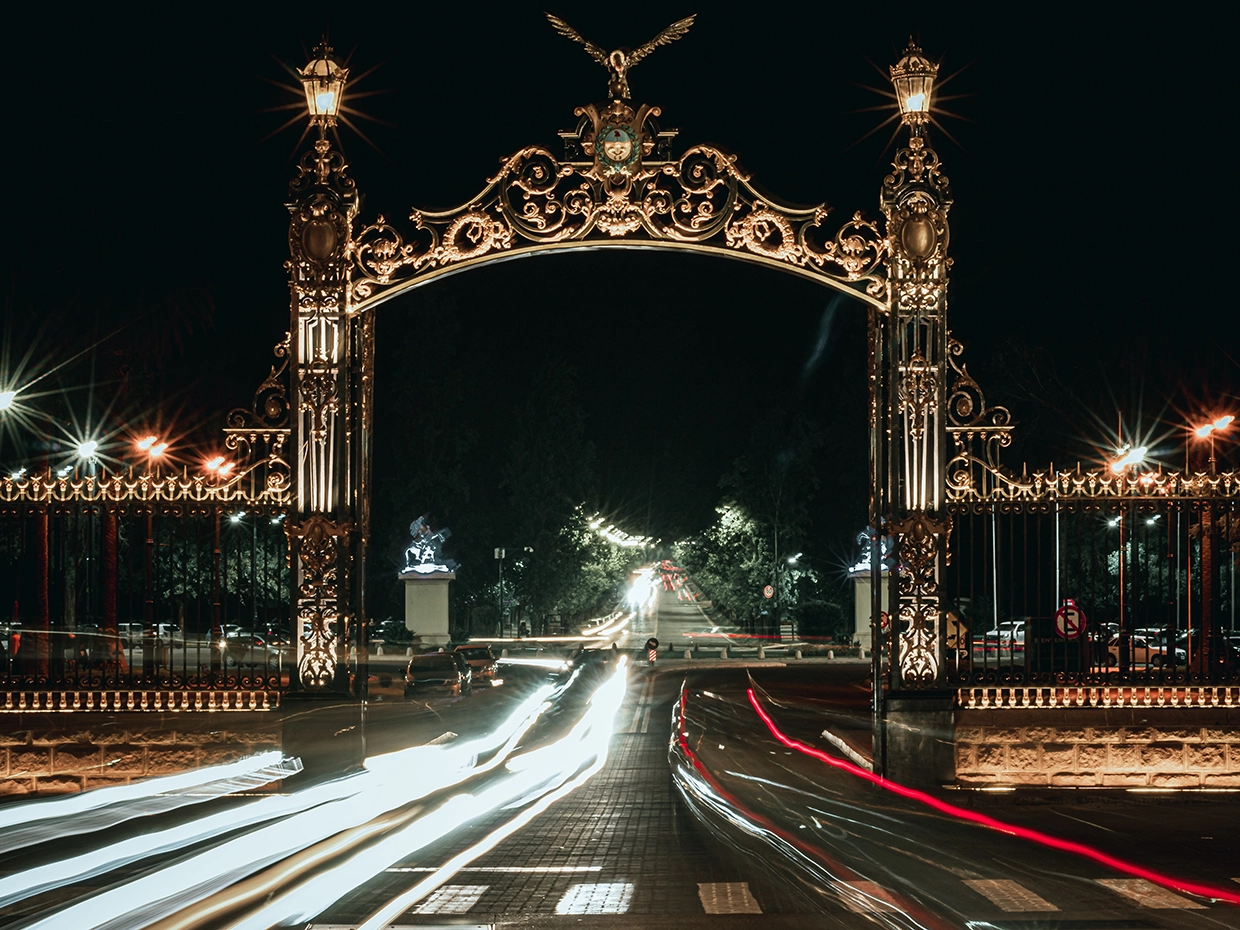The Argentine city of Mendoza is the perfect destination for both food lovers as well as adventure seekers.
Contents
The city
Mendoza has many things to be proud of. It was named on October 30, 1987 as the International Wine Capital by the OIV, designated the 8th World Wine Capital, chosen as one of the 21 most wonderful cities in the world in the “New7Wonders Cities” contest. It is defined as an Oasis City since artificial irrigation is the foundation of its existence. It is characterized by its groves, irrigation ditches, wide paths and renovated green spaces that offer residents and visitors an excellent quality of life. Mendoza has an artificial park of 510 hectares, named after the Liberator of America, General San Martín.
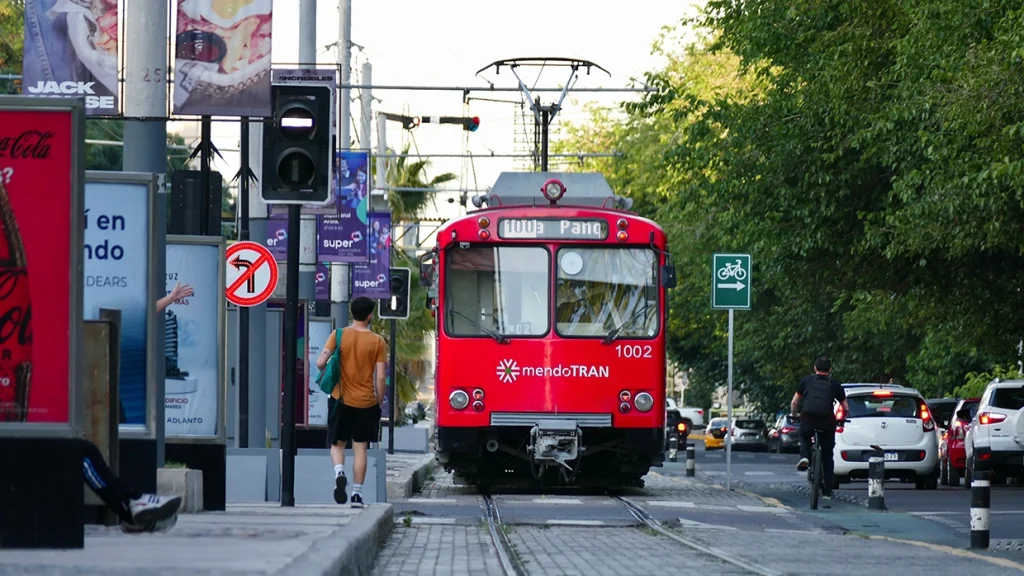
Independence Square
It is the main square of the city and a popular meeting point. It is surrounded by trees and gardens, and has a central fountain. Here you can relax, enjoy the atmosphere and observe local life.
Sarmiento Street
It is a pedestrian street full of shops, restaurants and cafes. It is ideal for walking, shopping and trying local cuisine. There are also street artists who perform live shows.
San Martin Park
It is one of the largest parks in the city and an ideal place to enjoy nature. It has extensive gardens, lakes, rose gardens, a zoo and the Cerro de la Gloria, where the famous Monument to the Army of the Andes is located. It was originally called Parque del Oeste and was created in 1896 under a project by the French architect and landscaper Carlos Thays, responsible for other important Argentine parks. The then Minister of Public Works, Emilio Civit, acquired, in Europe, the cast iron gates that defined the entrance to the park in 1907 (cover photo).
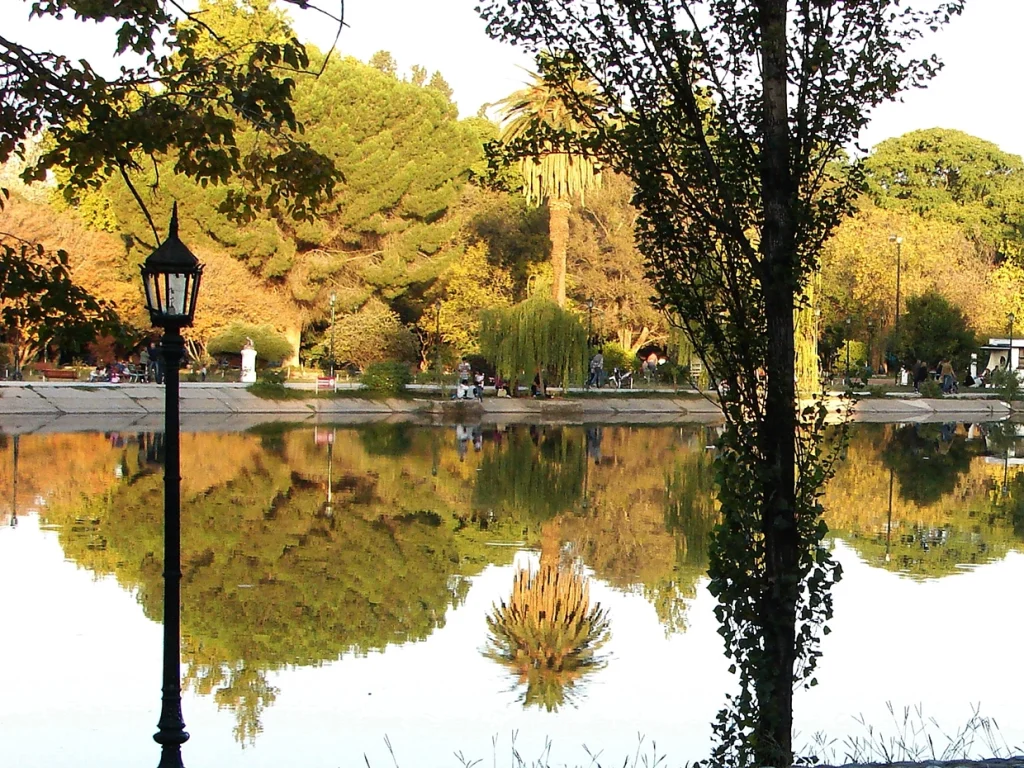
Hill of Glory
It is a fourteen-ton bronze sculpture that pays tribute to the Army of the Andes for its successful liberation campaign. Its author was the Uruguayan artist Juan Manuel Ferrari and it was inaugurated on the occasion of the centenary of the crossing of the Andes. The complex is located on a hill at more than 900 m altitude, as we already mentioned within the San Martín Park.
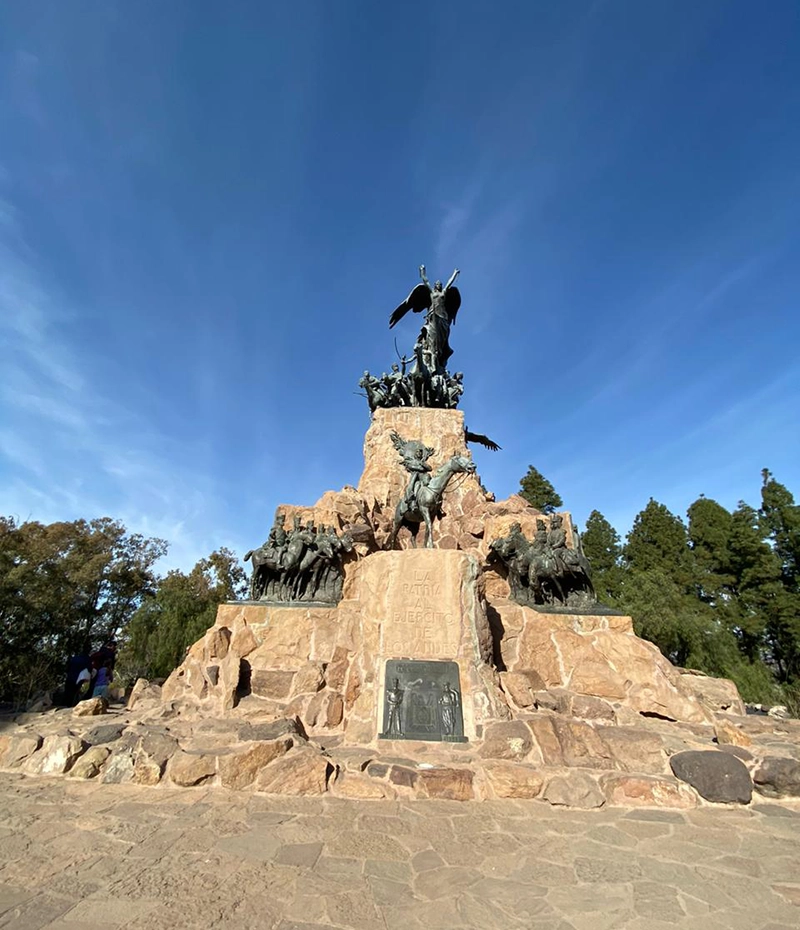
Pedro del Castillo Square
It is the oldest square in the old city of Mendoza. It is named in memory of Pedro del Castillo, founder of the city.
You will wonder why it is not the main square of the city. The reason is that on March 20, 1861, a large earthquake occurred that destroyed a large part of the colonial buildings that were around the square, leaving it covered in rubble. As a consequence of the event, the city of Mendoza is refounded 1 kilometer southwest of the square.

Museum of Modern Art (MAMM)
If you are an art lover, this museum is a must-see. It exhibits a collection of contemporary and modern art by Argentine and foreign artists. It also usually has interesting temporary exhibitions.
Mendoza Central Market
If you like local food, this market is the perfect place. You will find a wide variety of fresh products, such as fruits, vegetables, meats and cheeses. There are also food stalls where you can try typical dishes.
Wineries and olive groves
Mendoza is one of the main wine regions in Argentina and the world. , so a visit to the wineries is an unmissable activity. You will be able to tour the vineyards, learn about the winemaking process and, of course, taste different varieties.
Its wines are internationally recognized and the region is famous for its production of Malbec, an emblematic red grape strain of the area. Mendoza’s wineries offer visits and tastings, which attracts tourists interested in wine tourism.
High mountain
This excursion will take you through the famous National Route 7, which crosses the Andes mountain range. You will be able to enjoy impressive landscapes, such as the Cuesta de Villavicencio, the Puente del Inca and the Aconcagua Provincial Park. You can also visit the town of Uspallata and the mountain town of Las Cuevas, near the border with Chile.
Villavicencio
Located approximately 50 kilometers north of Mendoza, this place is famous for its mineral waters and mountainous landscape. You can visit the old Hotel Termas de Villavicencio, which used to be a famous spa, and enjoy a beautiful natural environment.
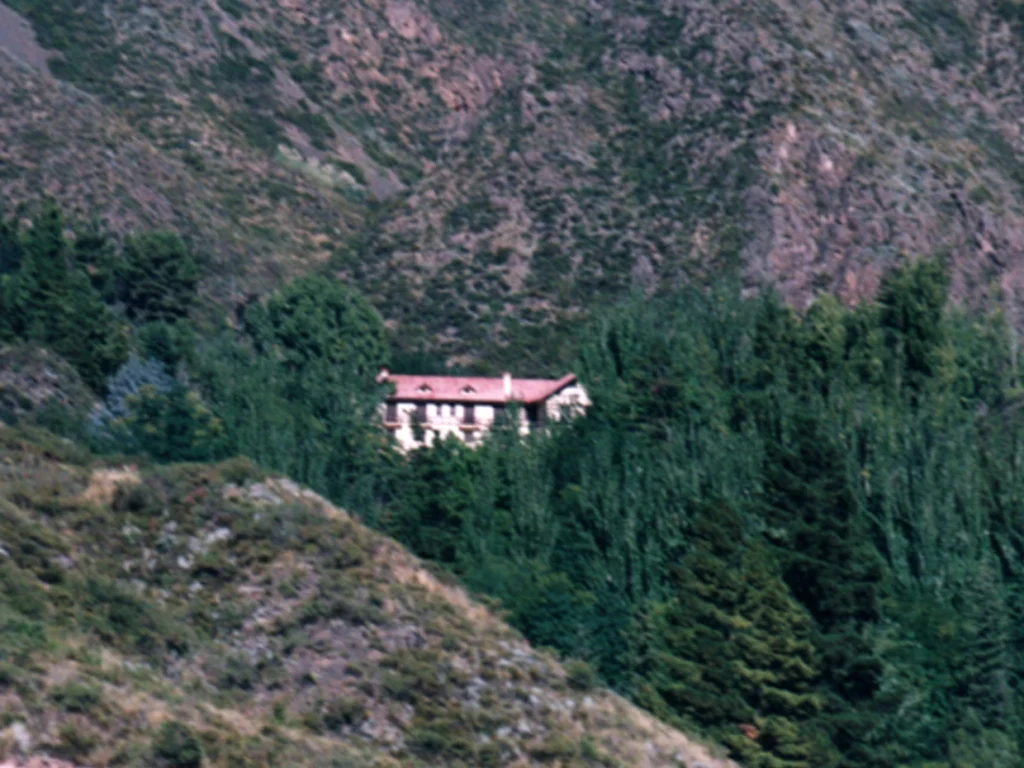


Stories…
:: From 1561 to 1891 Villavicencio was the main route between Buenos Aires and Santiago de Chile. This was documented in the memories of numerous European scientists, such as the English naturalist Charles Darwin, who spent two days in the “isolated hut of Villavicencio” in 1835.
:: The history of Villavicencio goes back to the very founding of Mendoza and the area takes its name from the Canarian captain Joseph Villavicencio (one of the captains of Pedro del Castillo, the founder of Mendoza) when in 1680 he settled in the place and discovered about twelve kilometers from where the hotel is today, gold and silver mines which he named Los Hornillos.
:: At the beginning of the century, the healing properties of the local thermal water were discovered and it also began to be bottled. The person who bought the land in 1923 was the rancher and member of the Argentine Rural Society, Ángel Velaz was the founder of the Termas de Villavicencio company. It occurred to him to add the theme of leisure and recreation through the hotel, but with the aim of promoting mineral water even more, so that the area would be known nationally and so that the benefits of thermal water would be more disseminated, Moretti adds.
:: Ángel Velaz died in 1943 in the Gran Hotel de Villavicencio that he himself had built; His nephews managed the company until the business group led by Héctor Greco bought it in 1979 and since then the hotel has not opened its doors again.
Aconcagua Provincial Park
The highest mountain in the Western Hemisphere is located in the park: Aconcagua at 6962 m.
The park is also home to the highest altitude sector of the Andes in America, with numerous peaks exceeding 5,000 m. In addition, it preserves glaciers that create rivers and meadows of natural beauty. On the other hand, this park has archaeological values, including the Aconcagua hill itself, which was a Quechua ceremonial site, which is why it is part of the Andean road system “Qhapac Ñan” –Inca Trail-, declared World Heritage by UNESCO.
Aconcagua Hill
With an altitude of 6960.8 m above sea level. n. m. (meters above sea level), is the highest peak in America.
The ski centers closest to this mountain are: Los Penitentes, Los Puquios, Vallecitos and Portillo. It is also a hill very frequented by mountaineers from all over the world, receiving between 6,000 to 7,000 visitors per season (December to March).
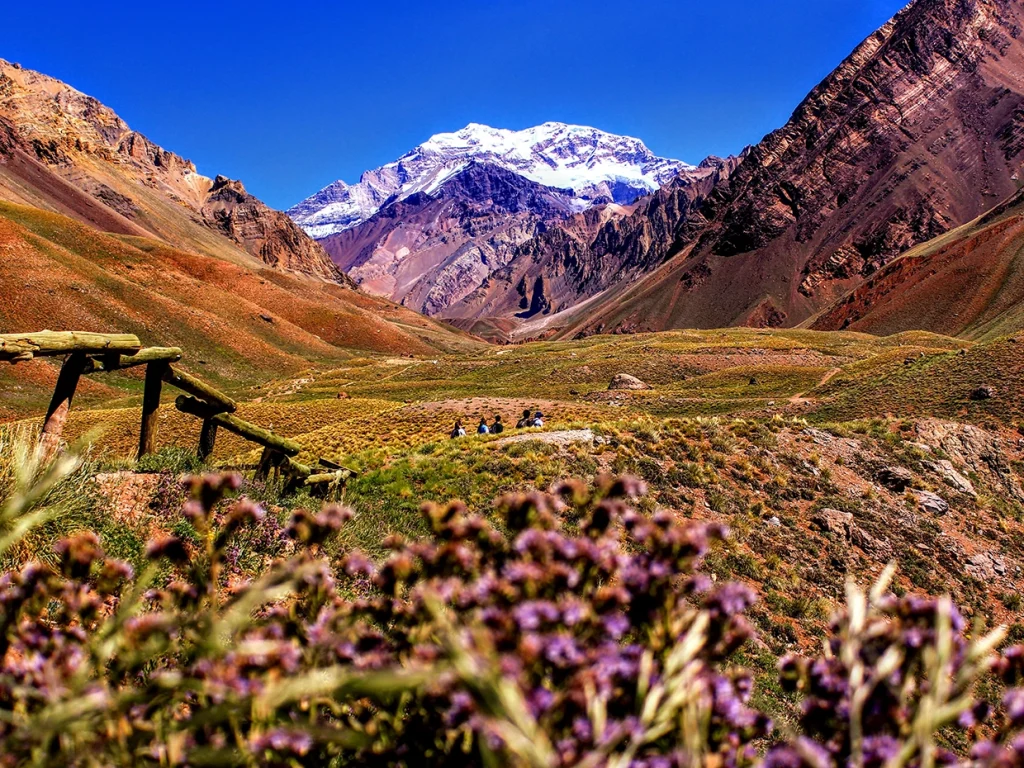
Los Horcones Lagoon
It is the mirror that often accompanies the Aconcagua colossus in images. This lagoon is part of a small wetland formed by five lagoons and meadows; They are sites with great diversity of flora and fauna. The Lagoon is of glacial origin and is 2,950 meters above sea level, it is fed by the meltwater of Cerro Tolosa.
Hiking in the lagoon
The Laguna de Horcones Circuit trail is a route of almost 2 km in distance that can be covered in an hour. It is a low-demand trekking trail that can be done with the family, including children, and allows you to see the southern wall of Cerro Aconcagua with its hanging glaciers. On this tour you can see how water, wind and glaciers shaped the Horcones Valley; You can see Laguna Espejo, Mirador del Aconcagua, Laguna de Horcones, a fossil record and various formations of glacial origin. The Horcones Visitor Center is open every day from 8 a.m. to 5 p.m. There you must pay the ticket for the self-guided circuit This is the only circuit that is allowed to be done throughout the year, unlike the ascents to the summit that can only be done from November 15 to February 28 or the trekking to the base camps from November 15 to 30 April that have well-defined seasonal dates. You should bring warm clothing, sun protection and sports shoes, as well as mineral water. Food is not sold in Aconcagua park. You can arrive by public passenger transportation from the Mendoza Bus Terminal, hiring an excursion or by private vehicle.
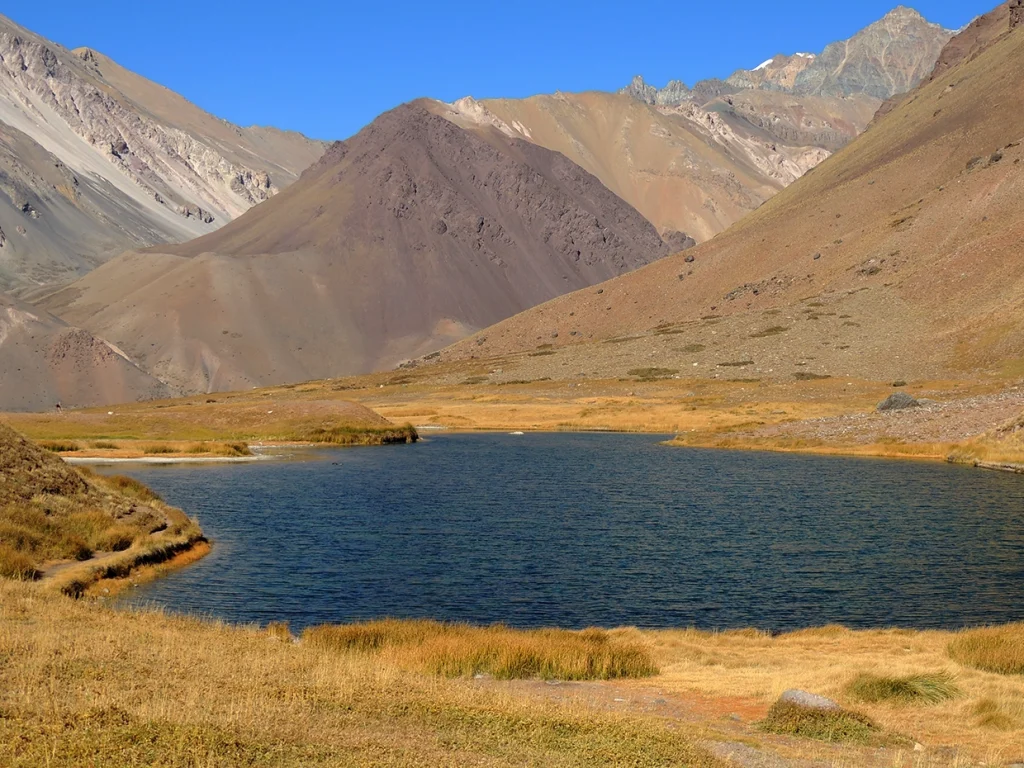
Inca Bridge
It is a protected natural area in the province of Mendoza, adjacent to the town of the same name and is part of the Andean Qhapaqñan road system. It is a very significant place due to its geological, landscape and historical value that make it an important feature of cultural identity.
There are several Quechua legends about the creation of the bridge that say that before the arrival of the Spanish, the heir to the throne of the Inca Empire was affected by a serious and strange paralysis, which is why it was recommended that he go from Cuzco to the slopes of the Bridge of the Inca to heal. According to legend, so that the heir could cross, the Inca warriors embraced each other and formed a human bridge over which the Inca passed with his son in his arms to the hot spring, where he found the sought-after cure. When he looked back to thank his warriors, they had petrified, creating the bridge

Potrerillos and Potrerillos Reservoir
This is a popular destination for outdoor activities. In addition to its importance for agriculture, the Potrerillos reservoir has also become a popular tourist destination in the region. It offers a wide variety of outdoor activities, including reservoir boating, fishing, hiking and mountain biking.
The surrounding mountains, part of the Andes mountain range, offer opportunities for winter sports such as skiing and snowboarding in the appropriate season. The mountainous landscape and reservoir create a spectacular scenic environment that attracts visitors all year round. There are also places to camp and enjoy the tranquility of the environment.

Uspallata
It is a small town of less than 3,500 inhabitants that is on its way between Chile and Argentina, since it is the first or the last population center between the countries, which are separated by the mountain pass of almost 4,000 meters of Los Libertadores.
Uspallata had a flash of fame when Seven Years of Tibet was filmed here, due to the area’s similarity to parts of the Himalayas. From Uspallata there are some main attractions, including Uspallata Historical Vaults, an area containing egg-shaped furnaces that were used for metallurgy (gold, silver, zinc, copper, etc.) in the 17th century. Another human intervention is the presence of the disused railway station, which was in operation as part of a trans-Andean line until 1984.
On the nearby Cerro Tunduqueral there are pre-Columbian petroglyphs. Uspallata is also a good point for a trip to the Cerro de Siete Colores, a very colorful place in the Andes, where you can see seven different colors in the rock, although most visitors report seeing more.

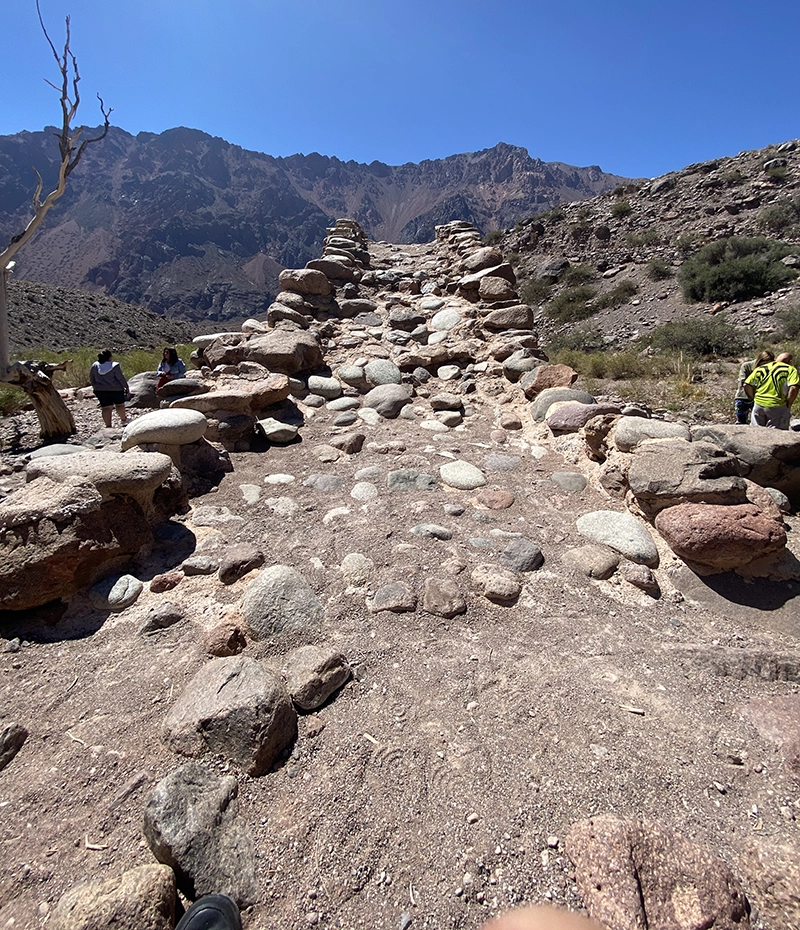
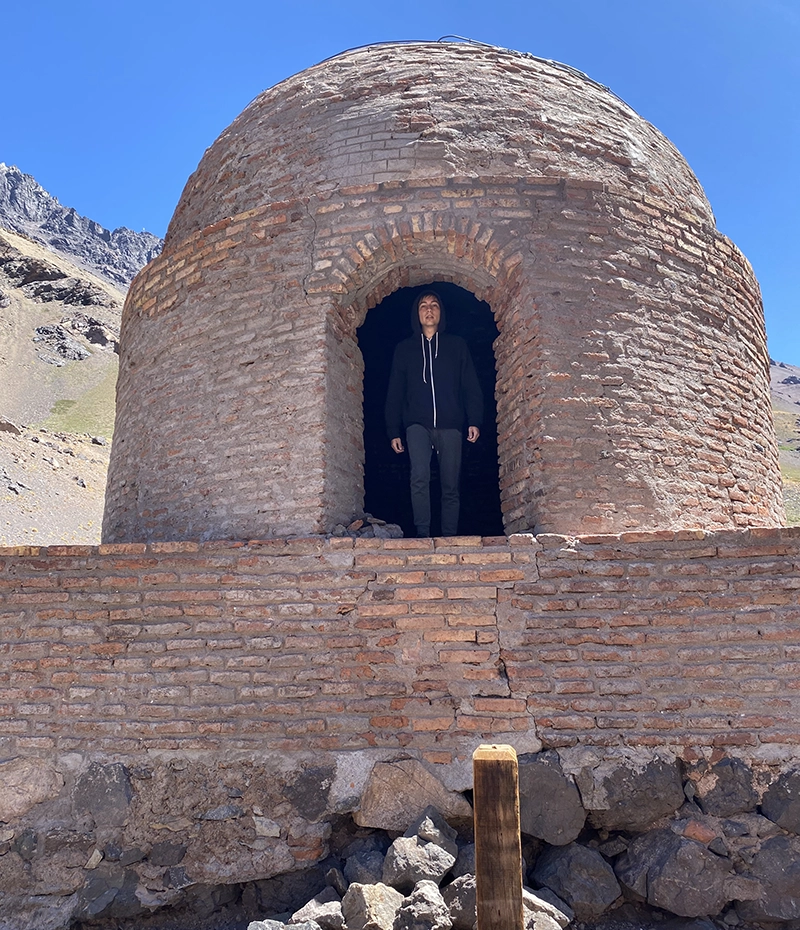
Tupungato
This wine region is located south of Mendoza and offers impressive landscapes with vineyards and the imposing presence of the Tupungato volcano.
Here you can visit boutique wineries, enjoy wine tastings and delight in the beauty of the vineyards in a mountain setting.

Hot springs and spas
The Mendoza region has several hot springs and thermal complexes where visitors can enjoy natural hot springs and relax in tranquil environments. The Cacheuta Hot Springs and the Challao Hot Springs are some of the popular options.
Cacheuta Hot Springs
About 40 kilometers from the city of Mendoza, you will find this thermal complex that offers outdoor thermal pools and different relaxation and spa options. It is a perfect place to rest and enjoy the hot springs.
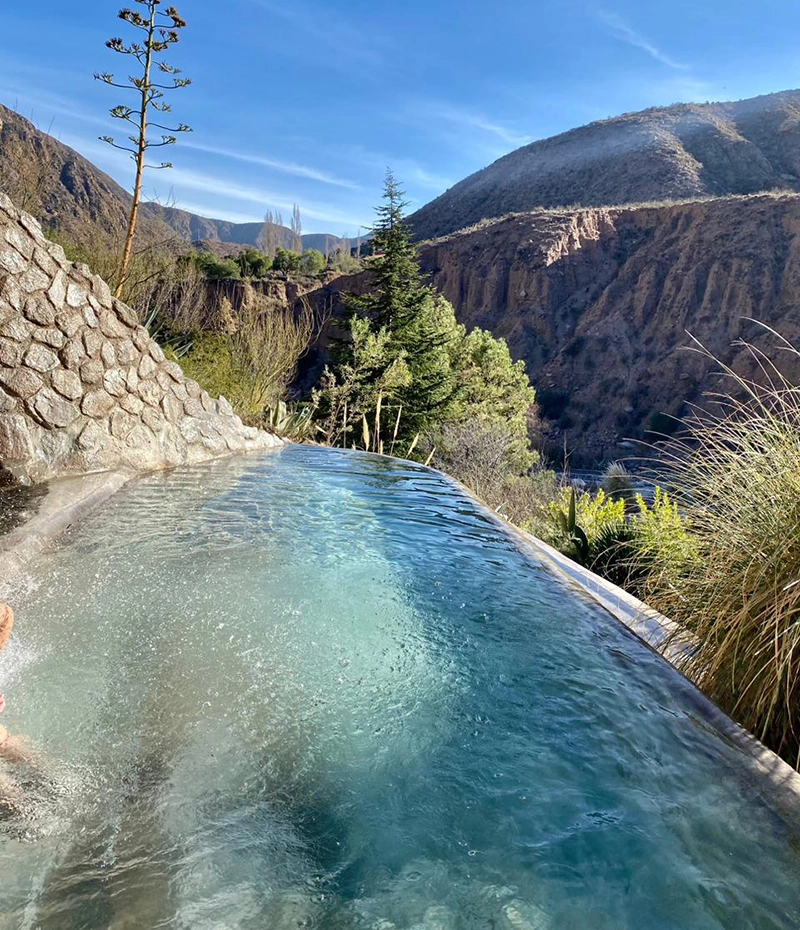
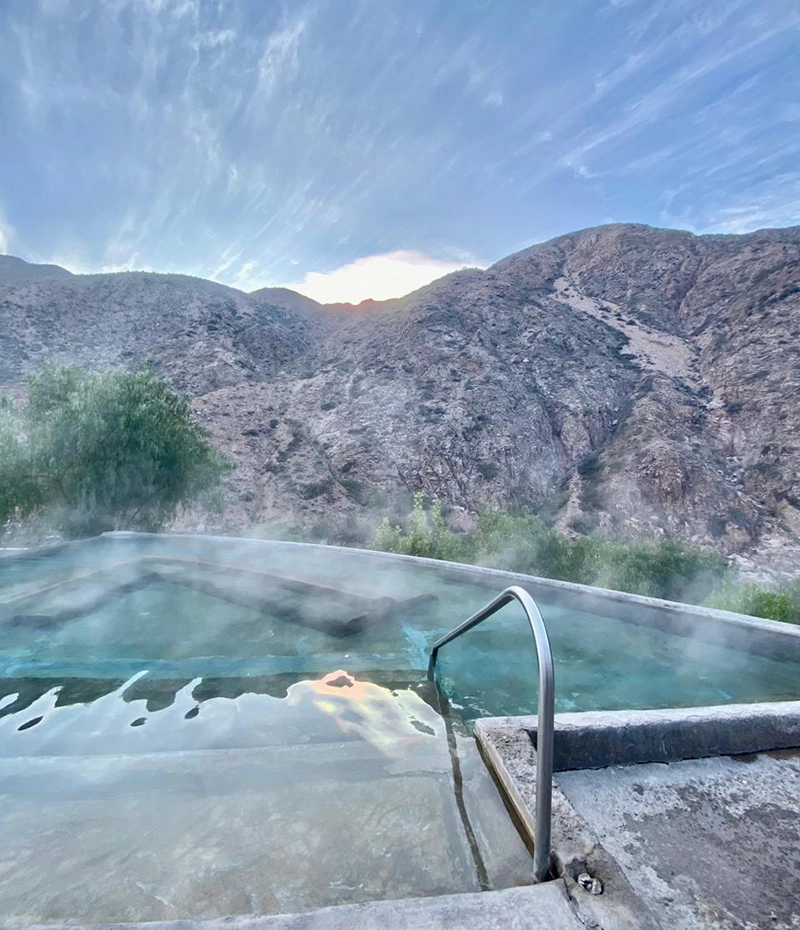
Challao Hot Springs
The Challao hot springs are located in the department of Las Heras, approximately 5 kilometers from the city of Mendoza.
Festivals and events
Mendoza hosts several festivals and events throughout the year that attract tourists from all over the world. Highlights include the National Harvest Festival, a wine and cultural celebration that takes place in March, and the Mendoza International Film Festival, which showcases films from around the world.

Cuisine
Mendoza offers a rich gastronomic scene. In the hotels with their international food and in the small restaurants with typical and traditional dishes. The variety is extensive. The variety is extensive: from Asado and empanadas to ethnic foods of oriental, Spanish or Italian origin, washed down with the best wines of our land.

FAQs
How to get to Mendoza?
BY PLANE, via Francisco Gabrielli International Airport.
BY ROUTE, through national routes No. 40 and 7 that connect Mendoza with the rest of Argentina from North to South and from East to West and also with Chile.
What is the best time of year to visit it?
The best time to visit Mendoza is autumn and spring. Late March and late September to be more precise is the best and it is better to avoid the summer which is usually very hot. In March, it must be taken into account that the National Harvest Festival is celebrated and hotel rooms are usually full.
Mendoza’s fame is due to its outstanding wine production, but it is not only an attractive destination for wine lovers. The quality of life offered by the city and the nature that surrounds it allow you to live unique experiences.
